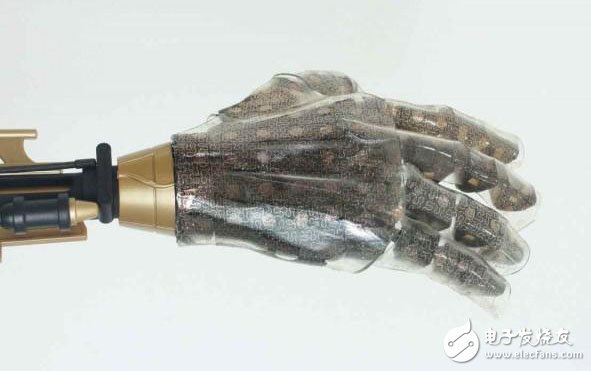Scientists have invented a simulated prosthetic skin that is as warm and elastic as real skin. It is equipped with miniature sensors for collecting environmental signals such as temperature, pressure and humidity. Although it is still too early, the ideal situation is that the simulated prosthetic skin will be developed in the future to transmit sensory information to the amputee's brain so that they can experience the feeling of the prosthesis.

Recently, prosthetic technology has developed by leaps and bounds. Scientists use 3D printing to create artificial arms that users can control through the nerves or brain. They even designed prosthetic skin that is self-healing or that is 1000 times more sensitive than human skin.
It all sounds very desirable, and using a prosthetic with a simulated skin can be problematic. Users will not be able to perceive dangerous hot items, and because of the weak grip, the things that are held on the hands can easily fall to the ground. In addition, the intelligent prosthetic device has a variety of sensors that are more rigid and easily broken, so that the flexibility is not as good as the real limbs. These problems are what scientists from the United States and South Korea want to solve. They design intelligent artificial skins that want to mimic the extensibility of real skin and the high-sensitivity sensing capabilities.
As described by Nature CommunicaTIons, the component of smart skin is a flexible, transparent polydimethylsiloxane (PDMS). This transparent silicone material used to cover the prosthesis is studded with sensors. The silicon nanobelt is made into a serpentine sensor that can withstand greater pulling force, and when stretched or extruded, not only can generate electrical feedback signals, but also can detect the cold and heat of the surface. Miniature capacitors in the material allow smart skin to detect humidity.
To test the ability of this material to detect humidity, the researchers initially compared the artificial skin to the humidity readings detected by commercial sensors and found that the two were very close. The researchers conducted the next test, and they poked the humidity sensor into a diaper of different humidity. Undoubtedly, the prosthetic limb wrapped with smart skin can tell you where it is wet and where it is dry.
The heat-generating devices they install in the smart skin match the body temperature to get closer to the real skin. The team filmed the real hand activity into a piece to guide the design of the skin. Like the tip of the finger, where they can't be pulled, they place more sensors, and places like wrists that focus more on flexibility.
Although smart skin sounds cool here, the premise of this is that sensor information can be passed to the user's brain. The team connected the skin to the nerve-stimulating electrode and tested it on mice. Although they found that the data was successfully transmitted to the mice, it is not known how much the mice can feel the stimuli such as temperature and pressure. In addition, these electrodes are not currently suitable for the human body, so researchers also want to upgrade related equipment through research on large animals.
UGR LED Downlight,LED Recessed Downlight,UGR Adjust LED Downlight,UGR LED Commercial Downlight
SHENZHEN KEHEI LIGHTING TECHNOLOGY CO.LTD , https://www.keheiled.com